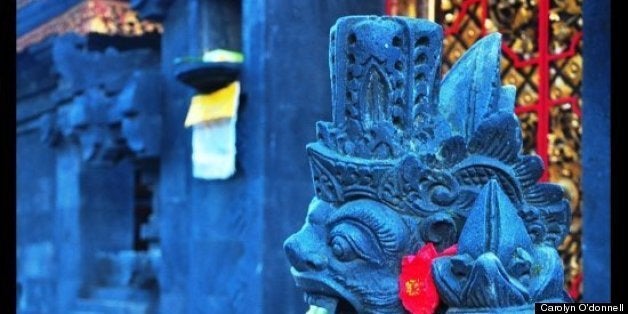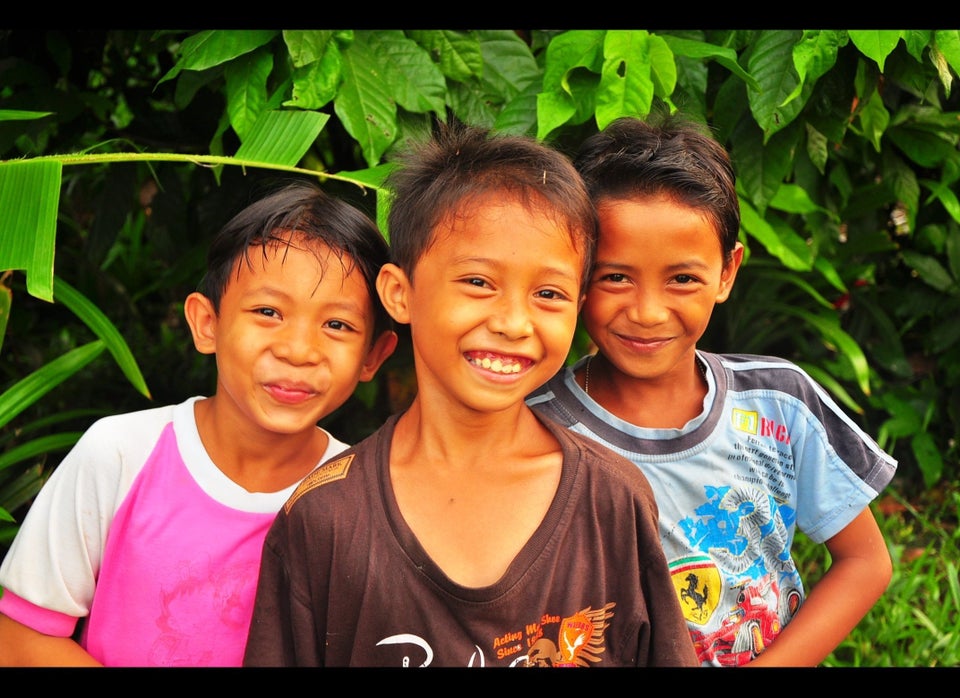
Some people believe Elizabeth Gilbert and her memoir of self-discovery in which she traveled to Italy, India and Indonesia in search of inspiration to write Eat, Pray, Love has ruined Bali, in particular Ubud, the cultural village where the author hung out with a medicine man and met her Brazilian husband.
There may be a few more women in kaftans wandering the streets of Ubud in search of potential mates - while being distracted by organic cafes, spas and opportunities to purchase silver jewelery or designer homewares - but it is easy enough to get away from them.
Some beach areas - Kuta, Sanur, Nusa Dua - are crammed with hotels and holiday-makers, but there are places where ordinary Balinese go about their life oblivious to espresso or yoga retreats. I spent a few weeks in an area called Buduk, northeast of the capital Denpasar, where there are almost no tourists, the locals stare at bule (foreigners) and the woman at the internet shop will lend you her modem to check the web connection after meeting for all of 45 seconds.
In day-to-day tourism-free Bali, life is a relatively relaxed mosaic of extended family, food and placating the island's many deities with ceremonies and the endless small offerings or banten that Hinduism Balinese-style demands. Of course there are still squabbles with in-laws and child-minding hassles, with a bit of black magic thrown in there to keep things interesting, but in Buduk people are friendly and have time to chat.
The predominantly Hindu Balinese believe in karma, ie you get back what you give out. The fundamental principle underlying Balinese Hinduism is that there is order in the cosmos, known as dharma. The opposite force of disorder is called adharma. In Bali Hindus seek balance and harmony between these two forces, hoping to free themselves from the never-ending cycle of reincarnation. While the Balinese can certainly charge inflated bule prices, violence - no doubt due to its disorderly effect - seems not to be part of their culture. Except when it comes to roosters - they do like cockfighting, although apparently even this is another form of offering. Which is not to say there aren't criminals in Bali; there are plenty of unsavory types in Kuta, but many of them are thought to hail from Java, the densely populated Indonesian island to the west.
Three years ago I spent some time in the Buduk area and it was much less populated then than it is now. Walking small roads past family compounds, I caused many a mouth to drop open. It's hard to imagine in a touristy place like Bali that a white face could still surprise anyone, but in these parts it did. Perhaps they expected bule to remain in the trendy bars of Seminyak, not venture to the Buduk boonies.
Called and waved to frequently, I had to explain my origins, where I was going, and why I would be going there on foot. Walking for pleasure was not a concept they grasped easily. Sometimes I was invited into homes for refreshment and closer examination.
It became natural to greet everyone I passed. Late afternoon was a pleasant time for exploration as the heat had mellowed but as twilight approached, so did the dogs. Or rather they ran at me, barking wildly, in small scruffy groups. I am a dog lover, but these snarling beasts were not particularly lovable. They weren't especially brave either, I just had to stand my ground as head of the pack and stamp my foot to make them keep their distance. I wasn't scared, just wary of rabies. A stick for shaking at them was a useful accessory.
Three years on there were more houses, fewer dogs woofing away, and just as much staring (at me). But one night I found a lovely, still place, where I didn't have to explain myself to anyone. Next to a large pura (temple) on a back road, a track led downhill amongst trees and past a small cemetery. I passed a stream where young men were bathing, and all I could see in front of me were rice paddies and palm trees. To the right, surrounded by foliage, there was a shrine wrapped in its checked black and white poleng (a cloth signifying the balance of good and evil). In the distance I could just see fresh offerings at the shrine, though not how you would approach to leave them there. There was no one else around.
It felt remote and very rural, though the sandy playgrounds of Canggu and surfer culture of Echo Beach - significantly developed in the three years since I'd been there - were a bike ride away.
Further on, to my left, was a small temple compound, with shrines and mossy statues wrapped in poleng cloth. The path continued, to the bottom of the small valley, and a rock face into which statues had been carved, with another shrine close by. There was no one there, but again fresh offerings were lying in front of the statues and shrine.
This, for me, was real Bali - where beauty and tradition converge because the Balinese make it their business for it to do so, whether bule notice or not. On several visits I always saw fresh offerings, but never another human being. The path indicated that others went there, but maybe it was only me and those who appeased the gods. It was a spot for gentle contemplation, for quiet appreciation. And not a kaftan or tour guide in sight.
